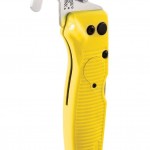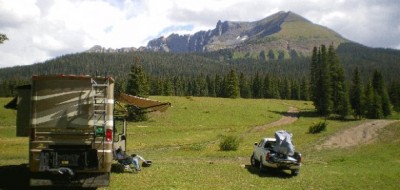By Bob Difley
 If you are among the photographers that recently acquired a digital SLR camera but find yourself still shooting the majority of your shots in Auto mode, you are not taking advantage the differences between a point-and-shoot or smartphone camera and your SLR. This will result in you taking only marginally better photos, essentially still in the snapshot category.
If you are among the photographers that recently acquired a digital SLR camera but find yourself still shooting the majority of your shots in Auto mode, you are not taking advantage the differences between a point-and-shoot or smartphone camera and your SLR. This will result in you taking only marginally better photos, essentially still in the snapshot category.
This does not mean you have to memorize the SLR’s manual and perfect all the features that are available to you. By learning the camera’s features one at a time, from the ones that will make the most difference, and practicing these you will see a marked improvement in your final photos.
For instance, in their new book, Living Landscapes: A Guide to Stunning Landscape Photography, Todd and Sarah Sisson write, “As with camera equipment, I promote simplicity when it comes to camera settings. Cameras are expensive, so I like to make them earn their keep. I embrace as many automatic functions as possible when photographing, over-riding these only when necessary.”
This makes using an SLR’s unique features an easier transition, since by making some simple changes in the way you shoot, you can produce instant results–and you don’t have to fiddle with the settings on each shot.
Todd suggests that since most landscape photography tries to achieve maximum depth-of-field (in focus from close up to infinity) that setting your default to Aperture Priority (A) instead of Auto, then setting the aperture at f/8 or f/16 and letting the camera select the best shutter speed for the best exposure will guarantee a good depth-of-field.
Another simple setting you can make as your default is how the camera selects its focus point. Todd says, “I don’t believe that my camera has ever moved out of Matrix metering. Matrix metering is super-smart at reading a scene and giving the best exposure possible.”
Just making these two simple settings can improve your photos. But the beauty of Todd and Sarah’s book is that they take you through several of these easy to use steps and the setting of defaults to show you instant results. But they don’t stop there. They then proceed to take you step-by-step into further improvements when you are ready, and to show you what to do next if the default settings need some tweaking or changing to get that perfect photo.
You can read an in-depth review along with additional tips at digitalphotosecrets and learn more about the authors and their book on their website.
The ebook can be loaded into your smartphone and/or iPad so that you have it as a constant and always present reference when you are out shooting and need some tips for unusual or complex situations. You can find and download the ebook at digital photography school.
For RVing articles and tips take a look at my Healthy RV Lifestyle website, where you will also find my ebooks: BOONDOCKING: Finding the Perfect Campsite on America’s Public Lands (PDF or Kindle), 111 Ways to Get the Biggest Bang for your RV Lifestyle Buck (PDF or Kindle), and Snowbird Guide to Boondocking in the Southwestern Deserts (PDF or Kindle), and my newest, The RV Lifestyle: Reflections of Life on the Road (Kindle reader version). NOTE: Use the Kindle version to read on iPad and iPhone or any device that has the free Kindle reader app.
Todd and Sarah have written an overview on landscape photography that is a great reference and learning manual for both beginning SLR photographers as well as the more experienced.



